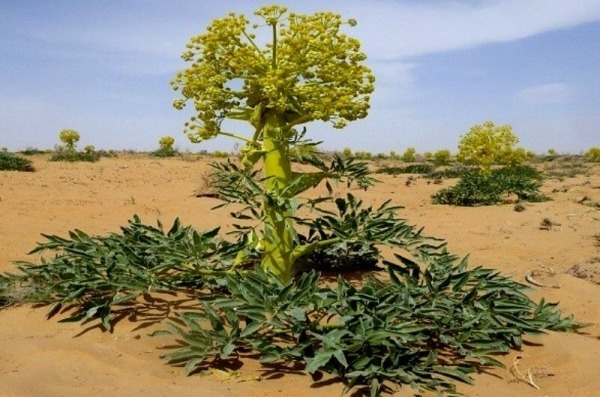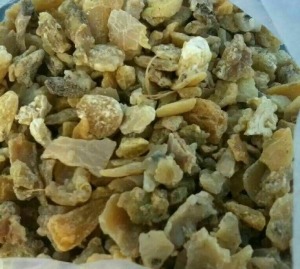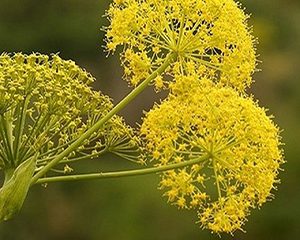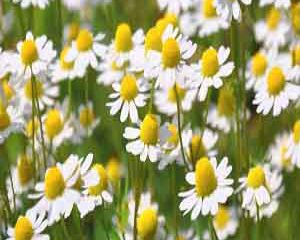Asafoetida specifications
Asafoetida plant
- Scientific name : Ferula gummosa Boiss
- Generic name : Gummi resina ferulae assafoetidae
- Persian letters : Angozeh, Khorakma, Angozakma, Korn Kama, Angard.
- English names : Asafoetida, Asafetida, Asant, Devil’s Dung, Gum asafetida, Assa-foetida plant.
- Arabic names : Anjodan, Halatit family, Abu Kabir family, Mantan family, Tayyib family.
- In local languages and different dialects, each region of Asafoetida or Angozeh has different names, including in the Isfahani dialect, it is called Hinck Hink and has a warm and dry nature.
- Plant family : Angoze belongs to the Apiaceae family.
- Organically used organ : Oleogum resin
Asafoetida is one of the most important medicinal plants of Umbelliferae with many properties. This plant is a large, herbaceous and perennial shrub that sometimes reaches a height of 2.5 meters. The stem is relatively strong and thick with a rough surface.
The base leaves are large and thick; So that their length reaches up to 60 cm. Its flowers are yellow and appear at the end of the stem. Asafoetida is not a visible stem in the first few years of its life and its leaves are wide on the ground, which is known as “Kamah” and “Angzakmah” in the pastures.

The fruits are oval and almost flat, with five lines on each and the sides are wing-like. The color of the fruits is dark brown. From the root or base of the stem of this plant, a substance called oleogum resin is obtained, which is known as asafoetida. Aafoetida is milky at first and has a sharp and bitter taste as well as a foul and odor that is nauseating.
Asafoetida has many uses in botany in the field of gastrointestinal tract, vegetables and food flavoring. It has a rich history in Ayurvedic medicine and Indian cuisine. Asafoetida has an astringent, bitter and biting taste and its smell is similar to the smell of garlic, stinking and unbearable. The nature of asafoetida is very, very hot and relatively dry.
read more : Native flowers of Iran
The main producing countries of asafoetida
This plant originates from the Mediterranean region and Central Asia and grows mostly in barren, dry and calcareous soils of warm Asia. Native to the steppes of Iran, Afghanistan and Turkmenistan, and also found in Tajikistan, Pakistan and Kyrgyzstan. Asafoetida enters India mainly from Iran and Afghanistan. Some of the imported asafoetida is re-exported to different countries after some processing and added value.
Asafoetida producing areas in Iran
This plant grows in different parts of Khorasan in Kuhsorkh city of Khorasan Razavi province in Dehmian village, Baluchistan and different southern regions, such as Kerman, Ravar, Dasht-e Murghab, Abadeh, Nain, Jandagh rangelands of Tabas, Bashravieh, Ferdows, Nehbandan and Ghainat cities.
Sweetasafoetida plant, which is the best and most popular type of asafoetida, is found around Kerman and Yazd and Khorasan Razavi, South Khorasan, Biabank, Abadeh and the suburbs of Taft, Semirom and Tabas, which has edible uses, and bitter asafoetida in Baluchistan, Lorestan and Fars. , Kohgiluyeh and Boyer Ahmad are mostly found that have industrial uses.
Other species of Ferula plant are also grown in Iran :
- F.foetida Regel
- F.alliacea Boiss
- F.Kuma
- F.Kurdica Pol
- F.foetida species : It has been identified in Damghan, Baluchistan, Khorasan, Shahroud, Miami and Sabzevar and in Zarrin Dasht of Fars and is a subspecies of the group that gives asafoetida Manten called Khorasan. This species is known as “Ashtalgaz” or “Ashtargaz” in the city of Dibaj and its surroundings ( Chahardeh Kalateh and Rudbar district ) and has many fans in preparing traditional dishes. The plant of this species is less tall than other species and has more odor and essential oil.
- F.alliacea species : It has been identified in Khorasan and Kerman.
- Species of F.Kurdica : In the mountains of Savojbolagh and Hamedan and in West Azerbaijan, it is abundant. Its gum is about the size of a bean and it smells like Baume de peru.
- F. Kuma species : which is abundant in the heights of Sershio , Kurdistan Saqez, Oramanat heights, Birsaran and Pokideh mountains, Kurdistan, as well as in Kohgiluyeh and Lorestan, and is a rich greenery and is a good forage for fattening horses and cows. Its local names are “Kama” and “Viye”. Asafoetida plant with more than 600 medicinal and therapeutic properties is a valuable treasure in the heart of the desert. South Khorasan is one of the cradles of this plant in the country with an annual production of 60 tons of asafoetida, but using the potential of this medicinal plant faces challenges such as selling raw materials, poor packaging and supply, smuggling and reducing production due to drought .
99% of this product in plastic barrels of 50 to 70 kg is exported in bulk and at a very cheap price to India, while the harvest of this plant is associated with the destruction of the environment and the extinction of native species.
read more : Everything about yarrow flower : How to Plant & care for them
Types of asafoetida
There are two types of asafoetida plants, one is fragrant and the other is smelly, which is cultivated in Iran and has medicinal uses.
Types of asafoetida sap
-
Tear or seed type
The first leachate harvest without a plant cross section is the tear type. This type of sap is the best and rarest type of asafoetida, which has a often flat, elliptical, hazelnut-sized appearance and comes out naturally from the stem of the plant in small quantities and is soft without soil and debris.
It oxidizes and darkens rapidly in the presence of air and turns purple and then reddish-brown, and if its cross section is broken, it turns yellowish white or mud.
-
Mass type
When the flower collar is shaved after the preparation of the plant, a reddish-yellow, brown and gray-brown sap comes out of the wound. This sap is harder and more impure than the tear type and may contain straw and even root parts and leaf fragments and has a lower value than the tear type.
Stages of planting and breeding asafoetida plant
-
Bed preparation stage
However, sowing the seeds of asafoetida plant in the dry season does not require a special substrate and even turns green in the form of manual sowing; But to increase the chance of germination, it is better to plant it in small atmospheres to collect rainwater and store moisture from rain, to help it grow green.
For this purpose, if the goal is to propagate asafoetida plant in field conditions, it is better to first clear the land of weeds by surface plowing and then level the ground in the direction of the main slope of the land.
It should be noted that in agricultural operations in dry areas where the rainfall is less than 250 mm, no chemical fertilizer is required and asafoetida seeds are often well established in soils with low fertility.
After cleaning the planting bed of weeds, it is necessary to create small furrows with a width of 15 cm and a depth of 10 to 15 cm in the direction perpendicular to the slope of the ground. Usually, the distance between the farrows is one meter, so that the seedlings can be managed by moving between the planting rows.
read more : Everything about galbanum : How to Plant & care for them
-
Planting stage
Field studies show that the best time to plant asafoetida is mid-December to mid-January. In some areas, however, planting operations may be delayed until February 1; However, it is better to sow the seeds in January so that in case of autumn and winter rains, the sown seeds will benefit from the moisture in the soil.
In asafoetida cultivation, planting is usually done in rows and inside the Faro (atmospheric) bed. Research has shown that increasing the planting distance by more than 50 cm did not affect the amount of gum in the roots of asafoetida plant; But it has a positive effect on the surface of the canopy.
To have an economical planting, seed sowing distances are usually not less than 50 cm along the planting rows, and the distance between the planting rows should not be more than one meter.
Usually, the depth of sowing seeds varies between three and five centimeters depending on the texture of the soil. The heavier the soil texture, the lower the planting depth, and the lighter the soil texture, the greater the soil depth. Also, to increase the chance of germination, at least three to five seeds are planted in each hole, and after the sprouts appear, they are thinned. Planting can be done manually or with a seeding machine.
-
There was a stage
Asafoetida plant takes 10 to 12 years, depending on the climatic conditions, to set seeds. Since the root of this plant is narrow and straight; Therefore, unlike the candle plant, whose roots are ready for exploitation within three years after planting the seeds, it needs at least five years for its roots to thicken and be ready for cutting.
In this regard, it is better to remove weeds mechanically during the first three years after planting in late April, May and June, and by weeding the weed inside the planting furrows and between planting rows to prevent occurrence. Eliminated competition.
Also, repairing the path of planting raceways for better storage of rainfall is effective for better growth of asafoetida. Another point to consider is not to collect the dried leaves of asafoetida plant at the end of the crop year; Because leaving plant debris increases soil organic matter and also prevents wind and water erosion of the field and helps maintain soil moisture.
read more : Everything about chamomile flower : How to Plant & care for them
-
Harvest stage of asafoetida plant
Asafoetida harvest is usually done five years after planting. The older the plant is, the more gum will be obtained due to the thickening of the plant roots. To harvest the gum, you must first allow all the active ingredients in the leaves of the plant to enter the roots, which usually occurs at the end of the growing season, the time of which varies depending on the climatic conditions of the planting area.
The best sign to identify the transfer of gum from the leaves to the roots is the complete drying of the basal leaves of the plant, which indicates the separation of the petiole from the collar area ( where the petiole connects to the upper part of the root ).
However, in different climates of Iran, the drying time of the leaves is not the same; But usually the drying of the leaves starts gradually from the middle of May and in most areas, all the leaves of the plant dry up by the end of June.
After drying the leaves, the stage of razor blade and gum extraction begins from the root of asafoetida plant. The method of pruning is very important and if the technical points are not observed, it will lead to the death of the plant.
In this regard, we can refer to the cross section of the root, which is often performed in the pastures where the natural habitat of this plant is. In the transverse method, which is done by profiteers and ignorant people, after removing the soil around the root, by cutting the upper part of the root to a thickness of 1 to 2 cm, the vegetative bud at the end of the collar is cut and the plant dies at the same time as the gum is harvested. This method is also known as (root pruning).
In the correct method of extracting asafoetida sap, which is known as the longitudinal method, first, the soil of the part around asafoetida root, which is usually behind the sun, is harvested to a depth of 15 and 15 to 20 cm wide to reveal the plant roots.
After the roots appear, with the help of a special circular cutting knife with a diameter of three to five centimeters and a thickness of 3 mm, it is created below the plant collar on the longitudinal surface of the root and a small flat stone is placed under the cutting part. If the gum spreads to the bottom of the root, the sap of asafoetida plant will not come into contact with the soil.
Also, to help harden the sap of the plant and prevent its sap from contaminating the soil and debris caused by wind and dust, with the help of the plant’s own foliage, a canopy is built on the root, which is known as the root chamber. (The less soil and debris the harvested gum has, the higher the quality and price of Angoozeh sap).
After pruning the plants, you should wait at least 2 days for the gum to seep out of the roots. Then on the third day, gum is collected. Also, after collecting the hardened gum, which is done by a knife, the root of the plant is razed again for the second time, and like the first time, a layer 1 to 2 mm thick and 3 to 5 cm long in the shape of The circle is taken longitudinally from the root flesh.
After 2 days, for the second time, you can collect asafoetida gum. Sharpening can usually be done up to three times or more; But it is better not to be more than three times. At the end of the pruning stage, after the last stage of harvesting, it is necessary to return the soil of the plant root to the first place so that the plant root is not attacked by plant pests.
After extracting the gum from the five-year-old plants of asafoetida plant, we have to wait for 2 years for the plants to be ready for pruning again. In other words, the second stage of pruning occurs in the seventh year of plant growth; But at this stage, the gum should be harvested from the east side of the plant and the harvesting steps should be done in the same way as described.
After the last stage of gum harvest, if the goal is to preserve the plants of asafoetida plant and harvest the seeds, we should wait until the plants bloom; However, if the goal is to harvest the gum, the razor operation can be continued repeatedly to the economic point (depending on the amount of gum that can be extracted and labor costs), and then the land can be plowed and replanted. The planting steps are the same as previously described; But this time it is better to sow the seeds between the rows of previous plants to observe the crop rotation and harvest a better crop.
read more : Everything about pot marigold flower : How to Plant & care for them
Asafoetida harvest time
- It is harvested just before flowering in April and March.
- When the leaves turn yellow and the leaves and stems are not broken, we twist them and put a stone on the bushes.
- A week later, the leachate inside the leaves returns to the roots. At this time, the stem separates from the crown and a protruding cap appears on the crown.
- We empty the soil around the cap and pour some soft soil on it.
- Put the dried leaves on the cap again to shade the cap in the sun.
- 7 to 10 days later, remove the soil on the cap and start shaving.
- Cut to the thickness of a sheet of paper.
- We put the canopy on the cap.
- 4 days later, remove the leachate from the incision and cut again.
- Repeat this several times at intervals of 4 days.
- Asafoetida sap is harvested at the age of 5 to 7 years of the plant and before flowering and sowing.
For sustainable exploitation of asafoetida plant products, the following should be considered :
- Shrubs should not be less than five years old.
- Pruning should not be done in the form of transverse cuts that cut the vegetative bud of the plant.
- After removing the gum, the soil around the root should be returned to its original location.
- Workers should be properly trained to harvest gum.
- Avoid any spraying and fertilizing operations on the plant.
- Prevent livestock from entering the farm to graze crop residues.
For each plant of asafoetida plant, depending on the age of the plant, the type of root cut and the number of times the root is pruned, the amount of product that can be extracted varies. In the method described above, on average, at least 20 grams of gum will be obtained in three stages of shaving. As mentioned, each asafoetida plant is harvested twice in its lifetime (ages 5 and 7); Therefore, a total of 40 grams of gum is obtained from each plant.
Asafoetida gum

Asafoetida gum
Asafoetida is a resin ( asafoetida gum ) that is obtained from the exudation of rhizomes (underground stems) and roots of Anjdan plant ( Angdan ). For this reason, it is also called Anjdan gum. Anjdan plant is native to the eastern and southern regions of Iran and western Afghanistan.
There are two types of sweet and bitter . The leachate is brown in color, in the form of a semi-solid, reddish-brown mass that hardens on drying.
Asafoetida contains 4 to 20% of essential oil, 40 to 60% of resin, and about 25% of gum and is marketed in two forms: killed (dried) and juice (gum). Asafoetida is marketed as gum or powder, of which asafoetida gum is the most common pure form. It also uses resin gum to obtain essential oil called asafoetida oil.
This gum is widely used in Asian countries such as Iran, Afghanistan, Pakistan and India. Asafoetida has many therapeutic roles in traditional medicine in Iran and is even consumed in countries such as India and it is used as a flavoring in foods and salads.
read more : Everything about mallow flower : How to Plant & care for them
Export of asafoetida to foreign countries
asafoetida sap has many medicinal properties ( medicinal plants ) and most of the sap produced is exported to countries such as India, Persian Gulf countries and even European countries such as France.
HS code or customs tariff of asafoetida medicinal plant
asafoetida is under the tariff line 13019020.
Indian traders interested in Iranian asafoetida
Export of asafoetida to India : Asafoetida is one of the products that despite being processed and valued, it is exported in bulk to other countries every year, including India. In addition to medicinal and food uses, asafoetida is also widely used in the perfume and jewelry industry ( for sticking precious stones such as diamonds on jewelry ), so the export of asafoetida plant is very profitable and valuable.
Since this medicinal plant is consumed in a very limited and traditional way in the country, more than 99% of it is exported to India in raw form and with improper packaging. All raw asafoetida is exported raw to India in 60-70 kg plastic barrels. Khorasan asafoetida is of sweet type and Indian traders are interested in buying it every year.
Asafoetida sap is processed in India for use in the pharmaceutical industry and a variety of drugs are produced from this product and exported to European countries. In India, asafoetida Pharmaceutical and Processing Plant is established and the processed product is branded and exported to European countries.
By processing this product and using it in the pharmaceutical industry, India increases its economic value up to 50 times and gives India a high exchange rate and income, and European countries recognize our country with the Indian brand. India also imports bitter asafoetida for processing from Afghanistan, Tajikistan, Pakistan and Kyrgyzstan, but because Khorasan asafoetida is sweet, they are very willing to buy Iranian asafoetida.
Products produced from asafoetida planting
If you cultivate one hectare of land, you can produce 4 crops :
- Asafoetida leachate : The main and most valuable product is asafoetida sap, which can provide very good profitability for the farmer.
- Asafoetida leaf : asafoetida leaf that dries after harvest and can be used as a gastrointestinal disinfectant for humans and animals, as well as poultry.
- Harvesting asafoetida : Harvesting a mixture of leachate and layers of underground stem known as asafoetida and countries with a vegetarian community as anti-flatulence spice are its loyal customers.
- Seed harvesting : Minimal use of it to expand habitats.
Factors influencing the determination of prices for asafoetida exports
Determining the export price of asafoetida depends on the harvest and the demand for this product in the harvest season and days. Although many determining factors play a role in the price of asafoetida, but the main and most important factor is the level of demand of end-users of asafoetida.
Notice : this article has been translated by google translate , if you have any questions or need more information Please contact us by writing a comment on this page.



0 Comments